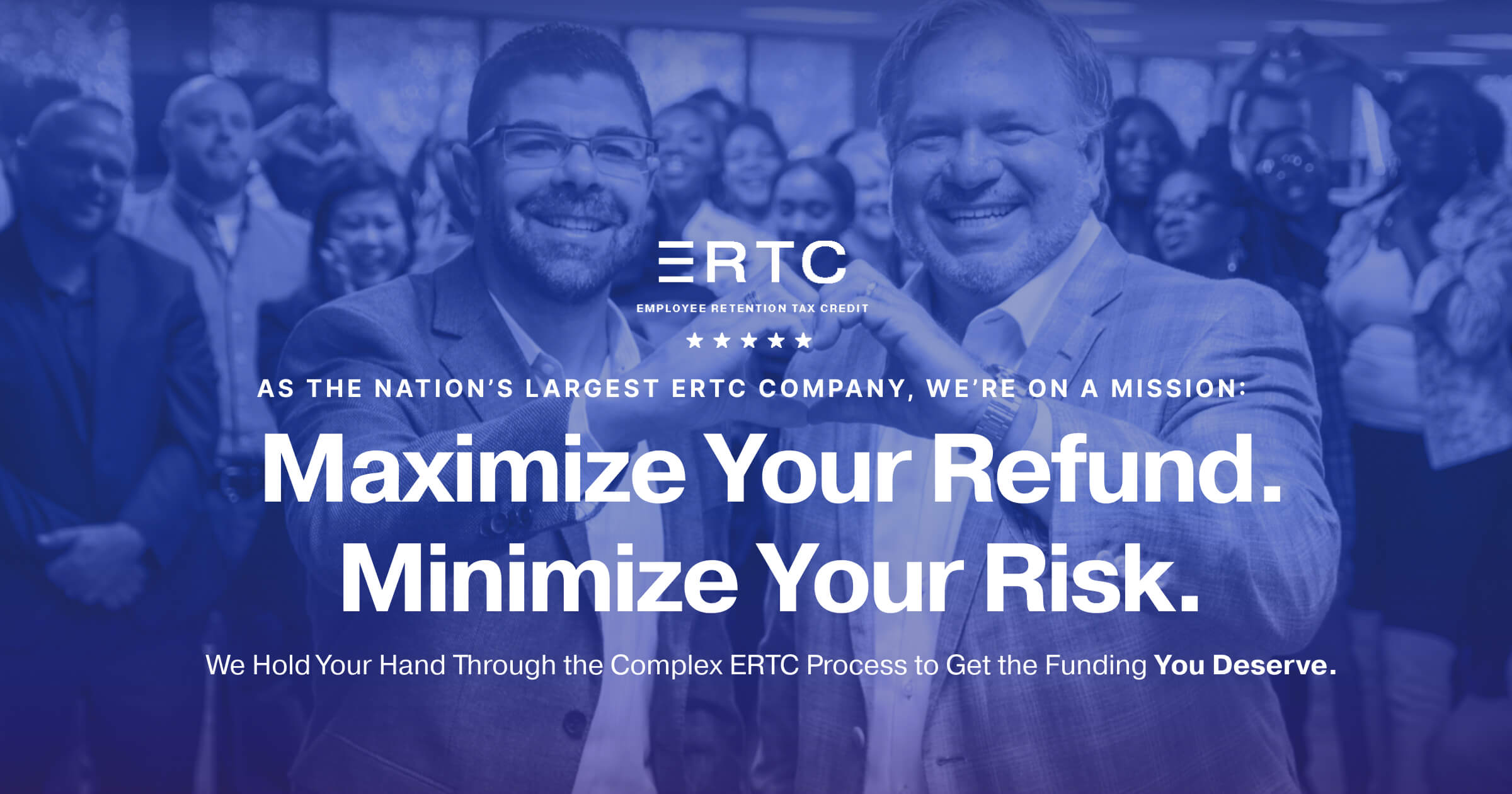Important Points
- Startups have the opportunity to claim the Employee Retention Tax Credit (ERTC) for up to $7,000 per employee per quarter.
- Significant decline in revenue or full/partial suspension of operations due to government orders is required for ERTC eligibility.
- ERTC is available for businesses with 500 or fewer employees, including those that received PPP loans.
- Organizing financial documents and ensuring compliance with IRS requirements are crucial for claiming ERTC.
- Combining ERTC with other tax credits can maximize financial benefits for startups.
How to Get the Most out of the Employee Retention Tax Credit (ERTC)
Startups are always searching for ways to boost their financial health. One of the most potent tools available today is the Employee Retention Tax Credit (ERTC). This credit was created to help businesses keep their employees on the payroll during tough economic times. But it’s not just about keeping employees—it’s about smart financial planning and leveraging available resources.
Getting to Know the Basics of ERTC
ERTC enables eligible businesses to claim a tax credit for the wages they pay to their employees. In 2021, this credit can be as high as $7,000 per employee for every quarter. This can accumulate rapidly, offering substantial financial relief to startups grappling with payroll expenses.
The ERTC was initially part of the CARES Act, but it has since been extended and expanded. To get the most out of this credit, you need to understand the basic rules. Basically, if your business has seen a significant drop in revenue or if you’ve had to stop operations because of government orders, you may be eligible.
Qualification Standards for New Businesses
To be eligible for the ERTC, startups need to meet certain standards. The first requirement is that your business should have no more than 500 full-time employees. The second requirement is that you must show a considerable decrease in gross receipts. In 2021, this means a drop of over 20% compared to the same quarter in 2019.
In addition, if your business was completely or partially shut down due to government orders, you may also be eligible. It’s important to keep records of these shutdowns and how they affected your business to back up your claim.
Advantages of Utilizing the ERTC
Applying for the ERTC can offer significant monetary advantages. This credit lowers your payroll tax obligation, liberating cash flow that can be reinvested back into your company. For startups, this could translate into additional resources for expansion and improvement.
In addition, the ERTC is refundable. This means that if your credit is more than your payroll taxes, the IRS will give you a refund for the difference. It’s basically cash back for your business, which can be a real advantage for startups that want to grow or solidify their operations.
- The ERTC can drastically cut down on payroll tax liability.
- Refundable credits can bring in more cash flow.
- Having more resources available can lead to business expansion and improvement.
By learning about and taking advantage of the ERTC, startups can keep their workforce and improve their financial situation. In the following sections, we’ll explore strategic tax planning at the end of the year and other incentives that can help startups even more.
Tax Credit for New Markets
Startups, especially those located in economically challenged areas, can greatly benefit from the New Markets Tax Credit (NMTC). This program promotes investments in low-income communities by offering tax credits to investors. For startups, this could translate to improved access to capital, which is vital for expansion and progress.
Startups can draw in investors with the NMTC, and secure funding for projects that may have a hard time finding financial support. This credit doesn’t just benefit the business, it also helps develop the community, making it a win-win situation.
Staying Compliant and Keeping Records
When you’re claiming tax credits like the ERTC, it’s critical to stay compliant and keep thorough records. The IRS needs certain records to confirm eligibility and the credit amount you’re claiming. If you don’t keep accurate records, you could run into problems during audits and you might even lose the credit. For more guidance, consider reviewing a business tax audit preparation checklist.
It’s crucial for startups to maintain a well-organized and easily accessible record system. This should include payroll records, financial statements, and any paperwork related to business suspensions or revenue declines. A steady practice of record-keeping will make claiming credits easier and ensure that you’re following IRS rules.
Keeping Your Tax Records and Documents in Order
Startups need a reliable system for storing and retrieving tax documents. This might mean using a digital record-keeping tool or a traditional filing cabinet, depending on what works best for your business.
Think about organizing your documents by category, like payroll, income, and expenses, to make things easier. Keeping these records up to date regularly will help you avoid last-minute panics and lower the chances of mistakes.
Additionally, it’s crucial to ensure digital records are backed up to avoid losing data. Cloud storage solutions provide a secure and easily accessible way to protect important documents.
For instance, a budding tech company employs a cloud-based accounting software to keep tabs on payroll and expenses. This software automatically classifies transactions, making report generation and ERTC tax credit eligibility verification a breeze.
Keeping Tabs on Employee Salaries and Health Benefits
It’s vital to keep precise records of employee salaries and health benefits to be eligible for the ERTC. Startups must make sure that their payroll systems are current and can generate in-depth reports on employee pay.
When figuring out the wages that qualify for the credit, it’s crucial to take into account all types of compensation. This includes bonuses and health benefits. By doing this, you can get the most out of the potential credit amount. Plus, you’ll be following IRS guidelines.
Regularly checking payroll records can help spot differences and make sure all information is correct and full. These checks also provide a chance to fix any problems before they affect the credit claim.
Getting in Step with the IRS
It’s absolutely crucial for startups to be in compliance with IRS requirements to successfully claim the ERTC. Stay in the loop about any changes to tax laws and regulations that could impact your eligibility or the process of making a claim.
Meeting with a tax expert can offer crucial advice and guarantee that all essential paperwork and forms are filled out accurately. This forward-thinking strategy decreases the likelihood of mistakes and increases the potential advantages of the credit.
Getting Ready for Your Board Meeting Presentation
For startups, a crucial part of year-end planning is presenting your financial strategies and plans to the board. If you prepare your presentation well, you can effectively communicate the advantages of tax credits like the ERTC, and gain approval for future initiatives.
Communicating Financial Strategies
Communicating financial strategies requires a clear and concise summary of the current financial situation and future forecasts of the company. Showcasing how tax credits can affect cash flow and profitability can show the board the value of these strategies.
Utilize visual aids like charts and graphs to highlight important points and simplify complex information. This method can captivate the audience and promote a more fruitful conversation.
Talking ERTC Strategy with Stakeholders
It’s important to involve stakeholders in talks about ERTC strategy to get their backing and make sure it aligns with the company’s objectives. Make sure to clearly spell out who’s eligible, what the potential benefits are, and any risks that come with claiming the credit.
Getting the Green Light for Tax Planning Strategies
Before you can start implementing tax planning strategies, you’ll need to get the go-ahead from your board. To do this, you need to understand your company’s financial goals inside and out, and be able to explain how tax credits like the ERTC can help you meet those goals. Make sure to address any questions or concerns the board might have, and be ready to show them exactly how these strategies will benefit the company.
Startups can garner the necessary backing to roll out efficient tax planning strategies by showcasing the strategic worth of these initiatives. For more insights, check out these tax strategy tips for startup businesses.
Consider this scenario: In a board meeting, the CFO of a startup gives a comprehensive breakdown of how the ERTC has affected the company’s financial stability. By showing the potential for savings and increased cash flow, the CFO gets the go-ahead for a full-scale tax planning strategy.
Wrapping Up the Year
As the year draws to a close, it’s time for startups to take a look at their financials and make any necessary adjustments to keep the momentum going. This includes reviewing key metrics, looking at the impact of tax credits, and setting goals for the next year.
Let’s say, for instance, a startup in the renewable energy sector conducts a year-end review of its financial performance. By analyzing the impact of the ERTC and other tax credits, the company identifies areas for improvement and sets ambitious growth targets for the new year.
By thoughtfully planning and strategically using tax credits, startups can set themselves up for a successful year.
Assessing Annual Results
Assessing annual results is a crucial step in planning for the future. Startups should measure their financial well-being by reviewing essential performance indicators, such as revenue growth, profitability, and cash flow.
Think about doing a SWOT analysis to pinpoint your company’s strong points, weak points, chances for growth, and potential risks. This type of analysis can give you a great understanding of where your company stands and help you make strategic choices.
Take the results of this analysis and use them to establish attainable objectives for the next year. By tying these objectives to the broader mission and vision of the company, startups can construct a blueprint for success.
For instance, an e-commerce startup uses a SWOT analysis to find new market expansion opportunities. The startup then uses the ERTC and other tax credits to create a strategic plan to grow market share and spur growth.
Updating Financial Forecasts for the Upcoming Year
As we approach the end of the year, it’s crucial for startups to update their financial forecasts for the next year. This requires reevaluating your business objectives and setting them against feasible financial projections. Take into account any market shifts, changes in customer behavior, or alterations in internal capabilities that might influence your predictions.
Revising your forecasts isn’t just a matter of crunching numbers; it’s about charting a strategic course for your enterprise. Involve your team in this exercise to gain a variety of perspectives and to cultivate a sense of investment. By including important stakeholders, you can make certain that everyone is aligned and dedicated to meeting the updated objectives.
Preparing Your Startup for Financial Prosperity in the Coming Year
If you want your startup to achieve financial prosperity in the coming year, you must put in place effective budgeting and cash flow management strategies. Begin by creating a comprehensive budget that includes all anticipated expenses and income. This will act as a guide for your financial activities and assist you in making informed decisions.
Managing your cash flow is just as important. Keep a close eye on your cash flow to make sure you have enough liquid assets to cover your costs. You might want to think about setting up a cash reserve to protect against unforeseen costs or downturns. By keeping your cash flow healthy, you can avoid financial worries and concentrate on opportunities for growth.
Commonly Asked Questions
- What exactly is the Employee Retention Tax Credit?
- Who is eligible for the ERTC?
- What are the benefits of the ERTC for startups?
- What documentation is required to claim the ERTC?
- Are there any other tax credits available for startups?
- How can I present tax strategies to my board of directors?
- What are some typical year-end tax planning mistakes to avoid?
- How can I ensure that I am in compliance with IRS regulations?
What exactly is the Employee Retention Tax Credit?
The Employee Retention Tax Credit (ERTC) is a refundable tax credit that was created to incentivize businesses to retain their employees during periods of economic hardship. It was first introduced as part of the CARES Act and it allows eligible businesses to claim a credit for wages that they have paid to their employees.
In 2021, startups could receive up to $7,000 per employee per quarter from the ERTC. The credit is applicable to wages paid from March 13, 2020, to December 31, 2021, providing a substantial financial cushion for qualifying businesses. For more detailed information, you can explore this startup business employee retention credit guide.
Who is eligible for the ERTC?
Businesses must meet certain criteria to be eligible for the ERTC. They must have suffered a substantial decrease in gross receipts compared to the same quarter in 2019. For 2021, this decrease must be more than 20%. For more detailed information, you can refer to this startup business employee retention credit guide.
Furthermore, companies that were completely or partially shut down due to government mandates related to COVID-19 might be eligible as well. It’s crucial to keep a record of these shutdowns and how they affected your business to back up your claim.
What are the benefits of the ERTC for startups?
The ERTC can help startups by decreasing their payroll tax obligation, thus increasing cash flow for other business requirements. The credit is refundable, so if it surpasses your payroll taxes, you will get a refund for the extra amount. This could be a crucial financial lifeline for startups seeking to expand or solidify their business.
What documentation do I need to apply for the ERTC?
If you’re applying for the ERTC, you’ll need to keep a detailed record of qualified wages and health plan expenses. You should also have payroll records, financial statements, and proof of any business suspensions or decreases in revenue on hand. For more guidance, consider reviewing this essential quarterly tax reporting information.
Keeping these documents in order and easy to find is important because the IRS might need them to check if you’re eligible and if the amount of credit you’re claiming is correct.
Do startups have other tax credits at their disposal?
Absolutely, startups can take advantage of various other tax credits. These include the Research and Development Tax Credit, the Work Opportunity Tax Credit, and the New Markets Tax Credit. Each of these credits has its own distinct advantages and can be used in conjunction with the ERTC for optimal financial benefits.
What’s the best way to present tax strategies to my board?
When you’re ready to present tax strategies to your board, make sure you communicate clearly and effectively. It’s important to make a strong case for the benefits of these strategies. Use visual aids to help illustrate your points and provide a detailed analysis of how these strategies could potentially impact the company’s financial health.
Get the key players involved in talks about the plan and answer any issues or queries they might have. Show them the strategic worth of tax credits, and you’ll get the backing you need to put effective tax planning initiatives into action.
What are some pitfalls to steer clear of in year-end tax planning?
Some of the pitfalls in year-end tax planning are not keeping detailed records, forgetting about available tax credits, and not seeking advice from a tax professional. These mistakes can lead to lost opportunities and possible compliance problems.
Keep these pitfalls at bay by keeping your books in order, staying updated on tax law changes, and getting professional help when you need it.
What should I do to comply with IRS regulations?
To comply with IRS regulations, you need to keep up with the latest tax laws and keep accurate records of all your financial activities. Make sure to regularly review your documentation to ensure it meets IRS requirements and consider consulting with a tax professional for advice.




